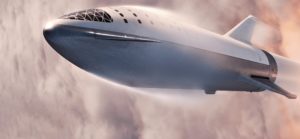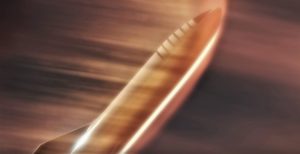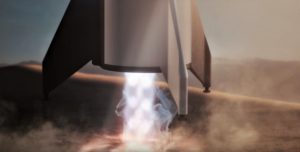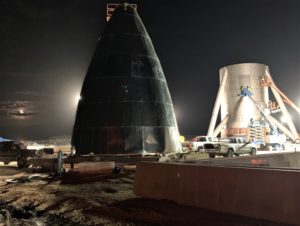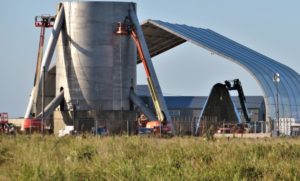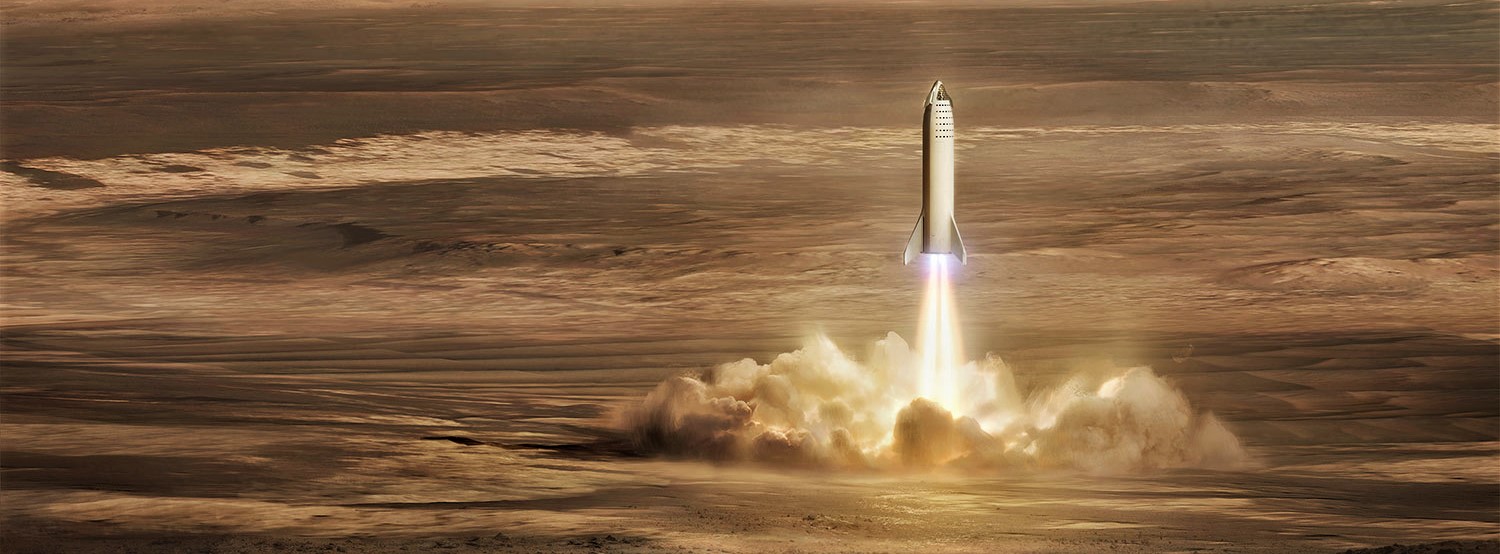
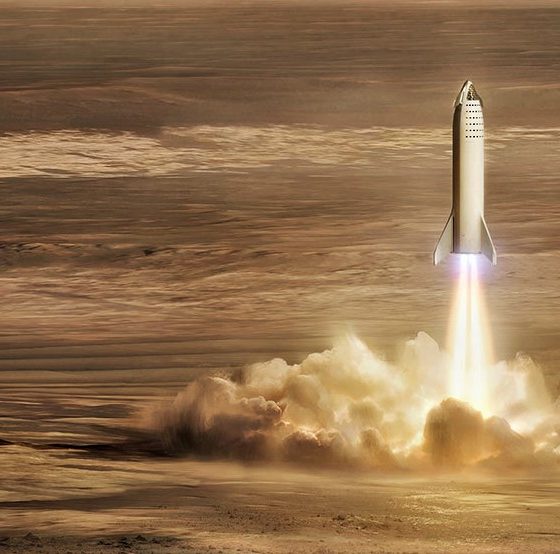
News
SpaceX’s Elon Musk: odds of Starship reaching orbit by 2020 are “rising rapidly”
SpaceX CEO Elon Musk has suggested that the company’s newly revamped Starship and Super Heavy rocket (previously known as BFR) could perform its first integrated launches – placing Starship into orbit – as few as 12-24 months from today.
Musk indicated that the odds of Starship reaching orbit as early as 2020 are now as high as “60% [and] rising rapidly”, thanks in no small part to the flurry of radical changes the spacecraft and booster have both undergone over the course of 2018.
Probability at 60% & rising rapidly due to new architecture
— Elon Musk (@elonmusk) December 27, 2018
Combined with a decision – made public at a September 2018 media event – to delay the debut of a vacuum-optimized upper stage Raptor (RVac) and stick with its mature sea level variant, Musk apparently is quite confident that these dramatic shifts in strategy will allow SpaceX to aggressively slash the development schedules of its next-gen launch vehicle. Intriguingly, Musk noted that while these “radical” design changes were almost entirely motivated by his desire to expedite the fully-reusable rocket’s operational debut, it apparently became clear that the cheaper, faster, and easier iteration could actually end up being (in Musk’s own words) “dramatically better” than its exotic carbon-composite progenitor.
Time. Although it also turned out to be dramatically better.
— Elon Musk (@elonmusk) December 27, 2018
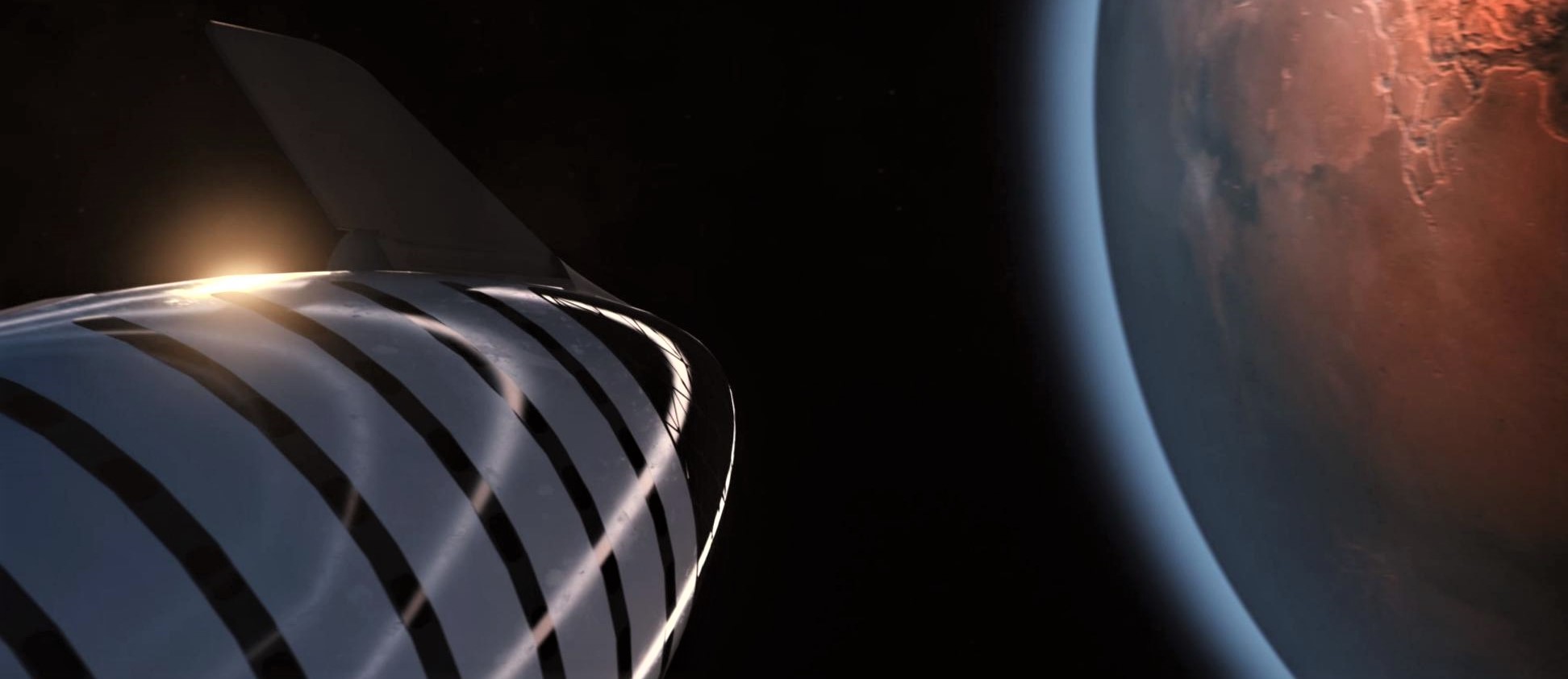
“Delightfully counter-intuitive”
Let there be little doubt – I am still immensely skeptical of this radical redesign and the implausible logistics of conducting said redesign at the last second while somehow maintaining the test schedule, let alone expediting it by 6-9 months. Despite the fact that Musk does seem to have a compellingly rational answer to every question thus far asked, he was no less convincing in mid-2016 when he stated with contagious conviction that Tesla’s Fremont factory would be an almost 100%-automated “alien dreadnought” as early as 2018. There is, of course, nothing wrong per se with being wrong, although taking 24 months and several hundred million dollars to realize as much can be downright fatal or at least a major health risk for any given company that faces such a challenge, as was the case with Tesla.
Skepticism aside, there are equally many reasons to be optimistic about the future of SpaceX’s Starship/Super Heavy (BFR) program over the next several years. Not only do metal hot structures have a proven track record of success (admittedly in the 1960s and for suborbital conditions, but still), but the century and a half humans have been making and building with steel serves to aggressively reduce risk in BFR’s development, whereas a giant, highly-reusable spaceship and rocket built mainly out of carbon composites is about as exotic, challenging, and alien as one could muster. One step further, Musk appears to be dead-set on the trade that the benefits of moving from composite to stainless steel far, far outweigh the costs.
- BFS/Starship shows off some of its heat shield. SpaceX may be looking into an advanced NASA solution for BFR’s thermal protection system. (SpaceX)
- Starship is shown here reentering Mars’ atmosphere at high speeds (SpaceX)
- Starship – in its 2018 design iteration – seen landing on Mars atop pillars of Raptor flame. (SpaceX)
- SpaceX CEO Elon Musk visited the South Texas site where Starship’s first prototype is being built on December 23rd. (Elon Musk)
- Starship… or BFWTF? 🙂 (NASASpaceflight /u/bocachicagal)
Most notably, Musk’s implication that a steel alloy skin – albeit with regenerative (i.e. liquid) cooling – could genuinely stand in for SpaceX’s ablative PICA-X heat shield technology on Starship was the most unintuitive but logical shift yet. Although steel alloys may literally have densities that are significantly higher than carbon composites, composites simply cannot (at least in the current state of the art) withstand high temperatures like those that Starship would inevitably experience during orbital and interplanetary reentries. As a result, Starship would need an extremely advanced heat shield technology that is minimally ablative, extremely lightweight, robust, and shock-resistant, not to mention an additional layer capable of mounting it to Starship’s composite hull while also insulating the propellant tanks and structure from the extreme heat of reentry.
Leeward side needs nothing, windward side will be activity cooled with residual (cryo) liquid methane, so will appear liquid silver even on hot side
— Elon Musk (@elonmusk) December 25, 2018
Steel, on the other hand, is one of the least thermally conductive metals available, while also featuring alloys with melting points that can approach and even surpass 1500 degrees C. With regenerative cooling, it’s entirely possible that a hot steel shield and fusion of propellant tanks and load-bearing structures could ultimately result in a spaceship far more reusable, reliable, and perhaps even performant that a spaceship relying on exotic heat shield materials and linerless carbon composite propellant tanks.
Perhaps BFR Block 2 or 3 will make room for dramatically improved composite formulations and production methods down the road, but advanced steel and other metal alloys appear to be the way forward for SpaceX for the time being. For now, we can sit, watch, and wait as something comes together at the company’s South Texas test and launch facilities.
For prompt updates, on-the-ground perspectives, and unique glimpses of SpaceX’s rocket recovery fleet check out our brand new LaunchPad and LandingZone newsletters!

News
Tesla China delivery centers look packed as 2025 comes to a close
Needless to say, it appears that Tesla China seems intent on ending 2025 on a strong note.

Tesla’s delivery centers in China seem to be absolutely packed as the final days of 2025 wind down, with photos on social media showing delivery locations being filled wall-to-wall with vehicles waiting for their new owners.
Needless to say, it appears that Tesla China seems intent on ending 2025 on a strong note.
Full delivery center hints at year-end demand surge
A recent image from a Chinese delivery center posted by industry watcher @Tslachan on X revealed rows upon rows of freshly prepared Model Y and Model 3 units, some of which were adorned with red bows and teddy bears. Some customers also seem to be looking over their vehicles with Tesla delivery staff.
The images hint at a strong year-end push to clear inventory and deliver as many vehicles as possible. Interestingly enough, several Model Y L vehicles could be seen in the photos, hinting at the demand for the extended wheelbase-six seat variant of the best-selling all-electric crossover.
Strong demand in China
Consumer demand for the Model Y and Model 3 in China seems to be quite notable. This could be inferred from the estimated delivery dates for the Model 3 and Model Y, which have been extended to February 2026 for several variants. Apart from this, the Model Y and Model 3 also continue to rank well in China’s premium EV segment.
From January to November alone, the Model Y took China’s number one spot in the RMB 200,000-RMB 300,000 segment for electric vehicles, selling 359,463 units. The Model 3 sedan took third place, selling 172,392. This is quite impressive considering that both the Model Y and Model 3 are still priced at a premium compared to some of their rivals, such as the Xiaomi SU7 and YU7.
With delivery centers in December being quite busy, it does seem like Tesla China will end the year on a strong note once more.
News
Tesla Giga Berlin draws “red line” over IG Metall union’s 35-hour week demands
Factory manager André Thierig has drawn a “red line” against reducing Giga Berlin’s workweek to 35 hours, while highlighting that Tesla has actually increased its workers’ salaries more substantially than other carmakers in the country.

Tesla Giga Berlin has found itself in a new labor dispute in Germany, where union IG Metall is pushing for adoption of a collective agreement to boost wages and implement changes, such as a 35-hour workweek.
In a comment, Giga Berlin manager André Thierig drew a “red line” against reducing Giga Berlin’s workweek to 35 hours, while highlighting that Tesla has actually increased its workers’ salaries more substantially than other carmakers in the country.
Tesla factory manager’s “red line”
Tesla Germany is expected to hold a works council election in 2026, which André Thierig considers very important. As per the Giga Berlin plant manager, Giga Berlin’s plant expansion plans might be put on hold if the election favors the union. He also spoke against some of the changes that IG Metall is seeking to implement in the factory, like a 35-hour week, as noted in an rbb24 report.
“The discussion about a 35-hour week is a red line for me. We will not cross it,” Theirig said.
“(The election) will determine whether we can continue our successful path in the future in an independent, flexible, and unbureaucratic manner. Personally, I cannot imagine that the decision-makers in the USA will continue to push ahead with the factory expansion if the election results favor IG Metall.”
Giga Berlin’s wage increase
IG Metall district manager Jan Otto told the German news agency DPA that without a collective agreement, Tesla’s wages remain significantly below levels at other German car factories. He noted the company excuses this by referencing its lowest pay grade, but added: “The two lowest pay grades are not even used in car factories.”
In response, Tesla noted that it has raised the wages of Gigafactory Berlin’s workers more than their German competitors. Thierig noted that with a collective agreement, Giga Berlin’s workers would have seen a 2% wage increase this year. But thanks to Tesla not being unionized, Gigafactory Berlin workers were able to receive a 4% increase, as noted in a CarUp report.
“There was a wage increase of 2% this year in the current collective agreement. Because we are in a different economic situation than the industry as a whole, we were able to double the wages – by 4%. Since production started, this corresponds to a wage increase of more than 25% in less than four years,” Thierig stated.
News
Tesla is seeing a lot of momentum from young Koreans in their 20s-30s: report
From January to November, young buyers purchased over 21,000 Teslas, putting it far ahead of fellow imported rivals like BMW and Mercedes-Benz.

Tesla has captured the hearts of South Korea’s 20s-30s demographic, emerging as the group’s top-selling imported car brand in 2025. From January to November, young buyers purchased over 21,000 Teslas, putting it far ahead of fellow imported rivals like BMW and Mercedes-Benz.
Industry experts cited by The Economist attributed this “Tesla frenzy” to fandom culture, where buyers prioritize the brand over traditional car attributes, similar to snapping up the latest iPhone.
Model Y dominates among young buyers
Data from the Korea Imported Automobile Association showed that Tesla sold 21,757 vehicles to the 20s-30s demographic through November, compared to BMW’s 13,666 and Mercedes-Benz’s 6,983. The Model Y led the list overwhelmingly, with variants like the standard and Long Range models topping purchases for both young men and women.
Young men bought around 16,000 Teslas, mostly Model Y (over 15,000 units), followed by Model 3. Young women followed a similar pattern, favoring Model Y (3,888 units) and Model 3 (1,083 units). The Cybertruck saw minimal sales in this group.
The Model Y’s appeal lies in its family-friendly SUV design, 400-500 km range, quick acceleration, and spacious cargo, which is ideal for commuting and leisure. The Model 3, on the other hand, serves as an accessible entry point with lower pricing, which is valuable considering the country’s EV subsidies.
The Tesla boom
Experts described Tesla’s popularity as “fandom culture,” where young buyers embrace the brand despite criticisms from skeptics. Professor Lee Ho-geun called Tesla a “typical early adopter brand,” comparing purchases to iPhones.
Professor Kim Pil-soo noted that young people view Tesla more as a gadget than a car, and they are likely drawn by marketing, subsidies, and perceived value. They also tend to overlook news of numerous recalls, which are mostly over-the-air software updates, and controversies tied to the company.
Tesla’s position as Korea’s top import for 2025 seems secured. As noted by the publication, Tesla’s December sales figures have not been reported yet, but market analysts have suggested that Tesla has all but secured the top spot among the country’s imported cars this year.
